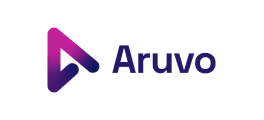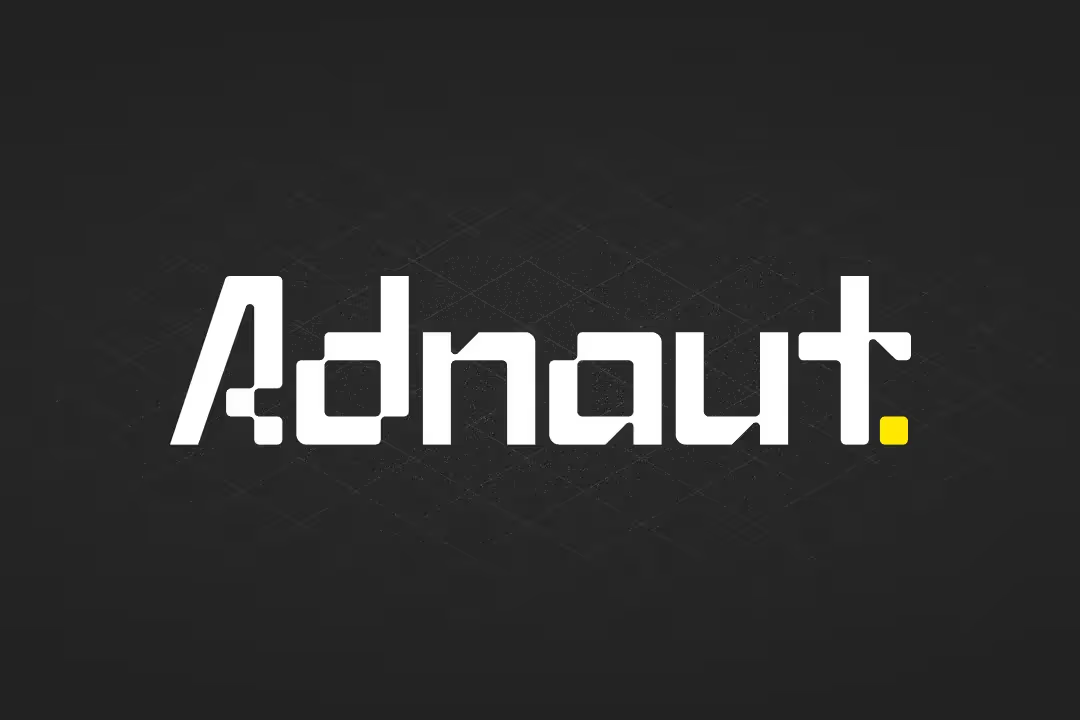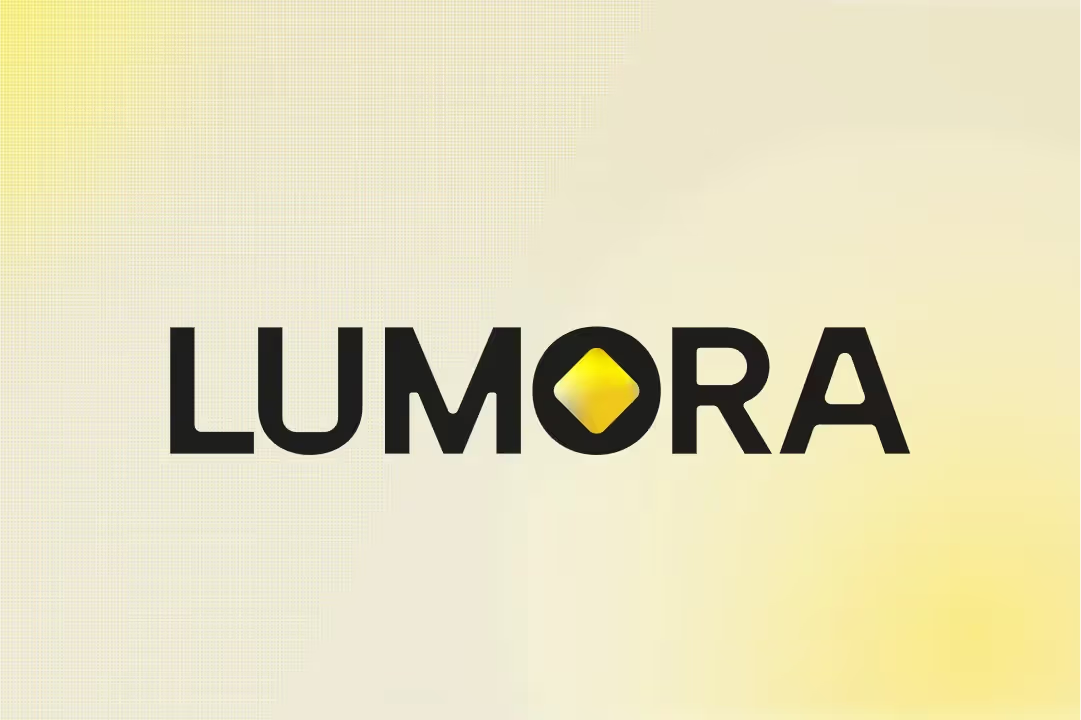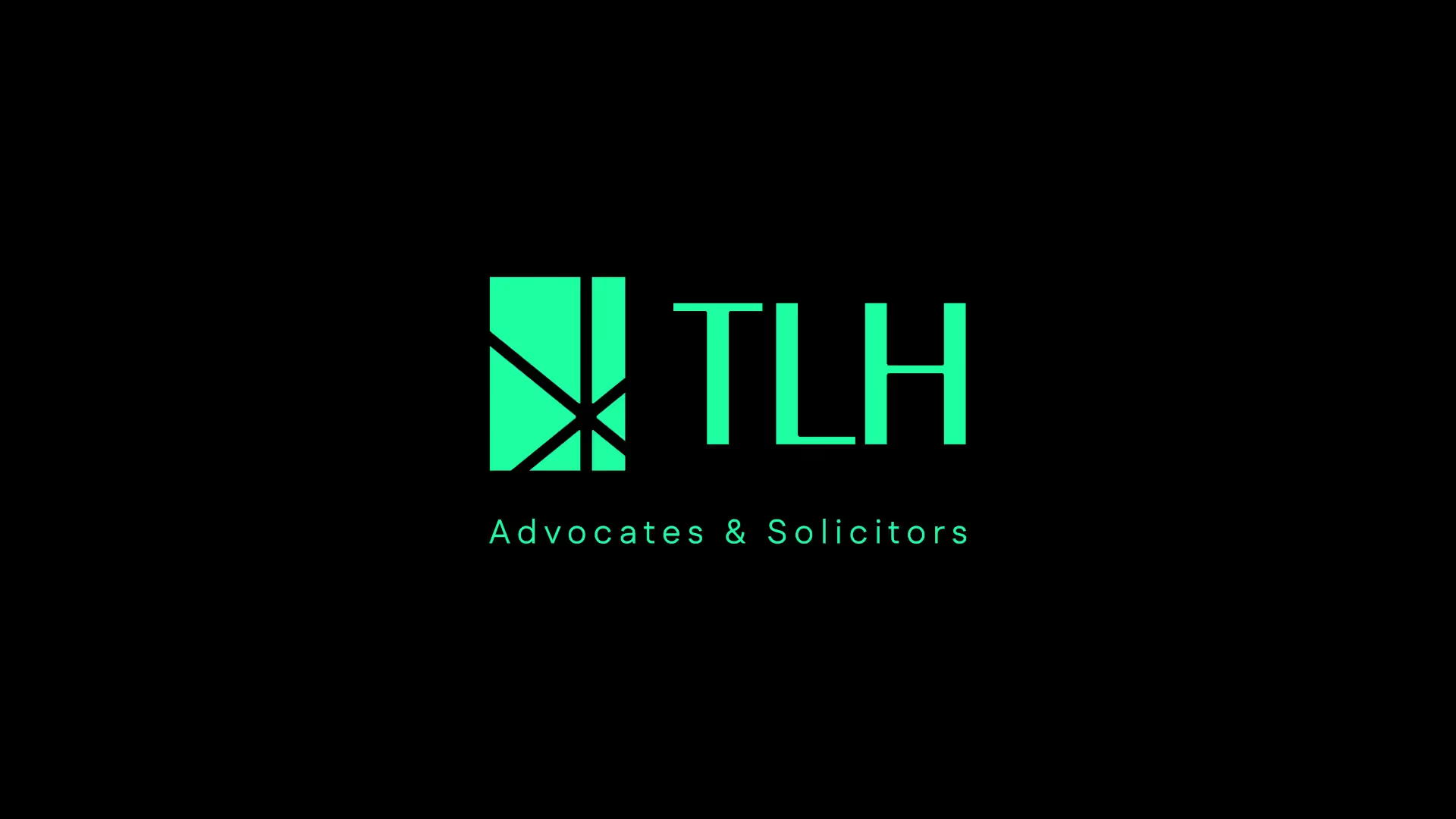Brand Naming Agency
Brand Naming Agency Projects
Brand Naming Agency Clients







Everything Design Agency's Complete Portfolio of Brand Naming Projects
- AdNaut
- Aruvo
- Zelo
- Lumora
- TLH
Everything Design Agency have named five brands so far.
The Science and Art of Brand Naming and Positioning, A Complete, Practitioner-Grade Guide to Building Unforgettable Brands
Creating a brand that resonates, remembers, and rewards requires mastering two fundamentals: strategic brand naming and precise brand positioning. These are not cosmetic exercises. They are the structural beams that determine whether your brand quietly blends into the background or becomes the signal customers rally around.
Why Names and Positioning Matter (More Than Ever)
In a world where buyers encounter thousands of messages daily, your name is the first impression and your positioning is the lasting memory. David Placek of Lexicon Branding—behind names like BlackBerry, Swiffer, and Impossible Foods—distills three rules for great names: memorability, distinctiveness, and sound symbolism.
In parallel, Motto’s leadership-first philosophy centers on “Ideas Worth Rallying Around®”—clarifying the organizing idea that employees can champion and customers can believe in. This is how brands like Klaviyo, Goodnotes, and Virgin scale without diluting meaning.
Bottom line: the name captures attention; the positioning gives it direction and endurance.
The Lexicon Method: A Scientific Approach to Naming
The Three Pillars of Effective Brand Names
- Memorability as the Foundation
People cannot buy—or recommend—what they can’t recall. Memorable names tend to be short, rhythmic, and imagery-evoking.- What to look for: 2–3 syllables, strong stress pattern, paint-a-picture semantics.
- Illustrations:
- Swiffer fuses “swift” with an action-oriented ending—instantly suggesting quick, light movement.
- Oura, Lyft, Stripe—each short, punchy, and easy to say/type.
- Quick tests: Can someone spell it after hearing it once? Remember it 24 hours later without re-exposure?
- Distinctiveness Over Comfort
Safe names get lost. The most powerful names often feel slightly uncomfortable at first because they defy category clichés.- Illustrations:
- BlackBerry initially felt unusual for a business device; precisely why it stood out.
- Compare Klaviyo to “Email Growth Pro”—one is ownable; the other is generic.
- Guardrail: Distinct does not mean obscure; the name must still be pronounceable and brandable.
- Illustrations:
- Sound Symbolism and Linguistics
Sounds carry meaning. Plosives (B, D, K, P, T) add snap and recall; liquids (L, R) feel smooth; nasals (M, N) feel warm.- Illustrations:
- TikTok (duplication + plosives) reads playful and rhythmic.
- Lumen feels light/clarity; Bolt feels speed/power.
- Tip: Map phonetics to positioning (e.g., security → sturdy consonants; wellness → softer vowels/liquids).
- Illustrations:
The Lexicon-Style Process: From Strategy to Implementation
- Avoid Groupthink
Use small, specialized teams (3–5 people: strategist, linguist, creative, legal liaison). Large committees bias toward the familiar.- Replace open brainstorms with territory sprints (e.g., Metaphor, Invented Morphemes, Compound Hybrids, Foreign Roots).
- Ensure Trademarkability (Early and Often)
Run knockout screens in key classes/markets (e.g., WIPO, USPTO/TESS, EUIPO). Then escalate promising candidates for counsel review.- Rules of thumb:
- Generate 150–300 candidates → 20–30 prelim clears → 8–12 deep-screened → 3–5 finalists.
- Always run cultural/linguistic checks in priority languages/regions.
- Rules of thumb:
- Create Vessels for Brand Stories
“We don’t create the story—we create the vessel that carries it into the market.” A name should be semantically roomy enough to scale into future offerings, yet evocative enough to anchor meaning from day one.
Motto’s Positioning Framework: Ideas Worth Rallying Around®
Leadership-First Alignment
Positioning fails when leadership wavers. Begin with executive alignment on the business model, ambition, values, audience, and POV. Only then translate to market.
Core Components
- Leadership Alignment
Workshops to agree on: vision narrative, non-negotiable values, business focus, growth bets, and constraints. Output: a 1-page Leadership Charter. - Cultural Integration
Brand ≠ veneer. Codify behaviors, rituals, and hiring signals that make the positioning true internally. Output: Culture Code and behavior checklist. - The Big Idea
Articulate a single, rallying concept (your POV). It should be provocative yet credible, easy to repeat, and flexible across campaigns. Output: Idea Worth Rallying Around® statement + 3 narrative angles.
Practical Positioning Strategies (Usable Today)
Value-Based Positioning Framework
- Target Audience: Who specifically benefits? What do they value (speed, certainty, control, status)?
- Competitive Context: Which frame of reference are you choosing (category)? What are the table stakes vs. your spikes?
- Unique Value Proposition: What do you deliver that rivals cannot or will not?
- Proof Points: Observable evidence (case data, speed/uptime metrics, certifications, expert endorsements, usage stats).
Two worked mini-examples
- B2B SaaS (Analytics)
- Audience: Growth-stage e-commerce heads who value predictable revenue.
- Context: “Revenue analytics” vs. generic BI.
- UVP: “Forecast-grade analytics that tie every campaign to profit, not just clicks.”
- Proof: 90-day pilot → ±3% forecast accuracy; audited profit lift across 12 brands.
- Consumer Wellness
- Audience: Busy professionals who value calm & consistency.
- Context: “Daily micro-habits” vs. generic “wellness apps”.
- UVP: “Two 5-minute rituals that lower daily stress in under a week.”
- Proof: Clinical survey with validated scales; >70% adherence after 30 days.
Integrating Naming and Positioning (Where the Magic Happens)
Cohesive Brand Architecture
Your name should reflect or comfortably host the positioning.
- Tesla leverages the inventor’s legacy while positioning as EV leadership.
- Amazon evokes scale and abundance while positioning as the “everything store.”
Architecture choices (with safe, familiar examples)
- Masterbrand/Monolithic: One brand drives most offerings (e.g., Google → Google Maps/Drive).
- Endorsed: Child brands gain trust via the parent (e.g., Microsoft 365).
- House of Brands: Distinct stand-alone brands (e.g., P&G portfolio).
Step-by-Step Implementation Playbook
- Strategic Foundation (1–2 weeks)
- Leadership Charter, Culture Code, POV statement, audience/jobs map, category choice.
- Name Generation (2–3 weeks)
- Define territories (e.g., Precision, Clarity, Momentum, Shield, Origin, Light).
- Sprint outputs per territory: 30–50 candidates with notes on semantics, phonetics, and visuals.
- Screening & Shortlisting (parallel)
- Knockout search (exact/similar marks in relevant classes).
- Social handle/SEO scan; high-risk collisions removed.
- Score against weighted rubric (example below).
- Validation with Target Audiences (1–2 weeks)
- Blind A/B/C tests; radio test (heard-once recall & spelling), bar test (say casually in a sentence), passport test (would you carry it globally?), Google test (search friction).
- Positioning comprehension surveys and concept bulleted claims.
- Creative Prototyping (1 week)
- Black-and-white logotype studies, tiny-favicon test, mobile lockups, email signature, app icon, landing page header, legal boilerplate.
- Decision & Governance
- Legal counsel opinion; documentation: Name Rationale, Voice & Messaging, Usage Guardrails, Architecture Map, Migration plan (if rebrand).
A Practical Scoring Rubric (Customize Weights)
Score each candidate name against the following six criteria, applying the indicated weight to arrive at a total out of 100.
- Memorability — 25%
Ask: Does it stick after one exposure? Can someone spell it after hearing it once? Does it have a distinct rhythm or cadence that aids recall? - Distinctiveness — 20%
Ask: Does it clearly stand out from category noise and competitor naming patterns? Does it avoid trend-chasing and me-too constructions? - Strategic Fit — 20%
Ask: Does it align with our point of view, positioning, and value proposition? Can it scale with the product/portfolio roadmap without boxing us in? - Sound & Semantics — 15%
Ask: Do the phonetics match the brand personality we want to convey? Are the immediate associations positive and on-strategy? - Legal/Digital — 15%
Ask: Are trademarks likely viable in relevant classes/markets? Are workable domains and social handles available? Any obvious SEO conflicts or collisions? - Cultural Fitness — 5%
Ask: Are there no problematic meanings, pronunciations, or connotations across key languages and markets?
Tip: Require ≥70/100 to advance; force a single-choice decision to avoid “Frankenbrand” compromises.
Industry-Specific Considerations
Technology & Innovation
- Challenges: crowded namespaces, rapid pivots, global reach.
- Guidance: avoid over-hyped techno-mashups; choose scalable semantics (platform > feature). Prioritize international pronounceability and class-appropriate clears.
B2B Services
- Challenges: credibility vs. memorability, trust signaling.
- Guidance: combine competence cues (clarity, stability, precision) with a distinct hook. Use evidence-rich positioning (certifications, SLAs, outcomes) and names that hold gravitas yet remain ownable.
Consumer Products
- Challenges: shelf impact, word-of-mouth, line extensions.
- Guidance: lean into sound symbolism, visuality, and repeatability (duplication, rhyme, alliteration). Ensure the name stretches across flavors/variants.
Common Pitfalls (and How to Avoid Them)
Naming Mistakes
- Committee-Driven Compromise → Form a decision trio with a tie-breaker.
- Literal Descriptiveness (locks you in; zero differentiation) → Prefer evocative over descriptive.
- Cultural Blindness → Always run linguistic checks in priority markets; maintain a do-not-use list (e.g., hard-to-pronounce clusters).
- Under-supply of Options → Generate at least 150+ to get 3–5 great finalists.
Positioning Errors
- Trying to Be Everything to Everyone → Choose a sharp frame of reference and a specific audience.
- Ignoring Competitive Context → Map parity vs. difference; choose a winnable lane.
- Internal Misalignment → Codify behaviors, OKRs, and enablement for sales, product, and CX.
Measuring Success: KPIs That Matter
Naming Effectiveness
- Unaided recall after one exposure (target: ≥40% for B2C tests; ≥25% for B2B).
- Association strength (do respondents connect intended ideas with the name?).
- Distinctiveness index (perception vs. competitors on a 5-point scale).
- Global scalability (no severe cultural/trademark conflicts in priority markets).
Positioning Impact
- Message comprehension (≥70% can paraphrase your UVP accurately).
- Competitive differentiation (perceived uniqueness vs. top 3 alternatives).
- Pipeline/Purchase intent lift (B2B: qualified lead rate, win rate; B2C: ATC/CR).
- Employee advocacy (internal usage/adoption of POV; enablement completion; Glassdoor narrative alignment).
Time horizons: Expect early leading indicators (recall, comprehension) in weeks; commercial indicators (win rate, CAC, LTV) in quarters.
The Future of Naming & Positioning
- AI & Automation: Great for divergent generation and pattern spotting, but human judgment is still essential for cultural nuance, legal risk, and story integrity.
- Global from Day 1: Assume multi-market usage; design for pronounceability and linguistic safety now, not later.
- Digital-First: Consider domain strategies (exact match vs. modifier), handle consistency, search friction, and SERP distinctiveness during shortlisting—not after.
Put It All Together (A Tight Checklist)
- Align leadership on vision, values, and category POV.
- Define audiences/jobs and select a frame of reference you can win.
- Craft the Big Idea your teams and customers can rally around.
- Generate names by territory, not by random brainstorm; produce volume.
- Run knockout legal/cultural screens; keep a diversified shortlist.
- Prototype quickly (logo wordmark, favicon, email sig, mobile header).
- Test for recall, fit, and clarity with real targets; capture proof.
- Decide with a weighted rubric; avoid compromise hybrids.
- Document governance (usage, voice, architecture, migration plan).
- Track KPIs—from recall to revenue—and iterate messaging, not the name.
Conclusion
Effective brand naming and positioning combine scientific rigor (linguistics, legal, research) with creative intuition (story, symbolism, and distinctiveness). Blending Lexicon’s disciplined craft with Motto’s leadership-aligned, rallying-idea framework produces brands that capture attention and sustain engagement.
As Placek notes, great names become vessels that carry your story into the marketplace. When that vessel is paired with a clear, credible, and inspiring positioning, you don’t merely launch a name—you launch a movement your customers and employees can rally around.
Appendix: Practical Tools You Can Copy-Paste Into Your Workflow
A. Naming Territories (use as sprint prompts)
- Momentum: Flux, Velo, Quanta, Propel, Sprinta
- Clarity/Light: Lumen, Lucid, Prisma, Halo, Beacon
- Precision: Vector, Datum, Gauge, TrueNorth, Pinpoint
- Shield/Security: Bastion, Aegis, Forta, Sentinel, Armory
- Origin/Nature: Terra, Root, Origin, Grove, Source
(Mix real roots + invented suffixes: -io, -ra, -is, -en, -um, -ta, -ly—but avoid trend traps.)
B. Rapid Linguistic Checks (5 minutes per name)
- Say it fast 5×. Type it with eyes closed. Pluralize. Make the possessive.
- Phone test: dictate the name without spelling; can they write it?
- Accent test: have two colleagues with different accents say it to each other.
C. Lightweight Validation Survey (10 questions)
1–3: Recall & spelling; 4–6: Associations & tone fit; 7–8: Differentiation vs. set; 9: Purchase/consideration shift; 10: “Which would you be proud to recommend?”
D. Governance Must-Haves
- Name Rationale (what it should evoke; what it must not be used for).
- Voice guardrails (3 dos, 3 don’ts).
- Architecture map (how sub-brands, features, and campaigns ladder).
- Migration checklist (redirects, social, contracts, regulatory, HR/IT).
Ready to build a brand worth rallying around?
Start with internal alignment on vision and values. Choose a winnable category frame. Generate many names within clear territories. Apply rigorous linguistic and legal analysis. Prototype quickly. Validate with real audiences. Decide with a rubric. Then codify and scale.
Do this, and your name won’t just be seen—it will be remembered, repeated, and revered.
Lexicon Branding's Complete Portfolio of Naming Projects
Lexicon Branding, founded in 1982 by David Placek, stands as one of the world's most successful and influential brand naming agencies. Over more than 40 years, the company has completed approximately 4,000 naming projects across 19 countries, creating brand names for products and companies that have generated over $350 billion in sales.
Major Technology Brands
Intel Pentium - The groundbreaking microprocessor name that changed technology branding forever. Before Pentium, computer chips were identified only by numbers. Lexicon created this name by combining "pent" (representing Intel's fifth generation) with the suffix "-ium" (found in elements like sodium, titanium, uranium) to convey something fundamental and elemental.
Microsoft Azure - Initially met with resistance from Microsoft executives who called it "a dumb idea," Azure became the name for Microsoft's billion-dollar cloud platform. The name connects to "cloud" through sky imagery while standing independently as a distinctive brand.
Apple PowerBook - Introduced in 1991, this name put Lexicon on the map as a legitimate naming force. The name combined "power" (performance) and "book" (portability) to position Apple's groundbreaking laptop that captured 40% of laptop sales in its first year, generating over $1 billion in first-year sales.
BlackBerry - Originally a small Canadian company called Research In Motion (RIM) approached Lexicon in 1998 for their email-capable phone. After exploring various concepts, the team landed on "BlackBerry" through word association, starting with "strawberry" for enjoyment and freshness. The name has sold over 33 million units across various iterations.
Consumer Products & Cleaning
Swiffer (Procter & Gamble) - P&G wanted to introduce "fun" to cleaning. Lexicon created Swiffer to evoke "swiftly and effortlessly sweeping and swiping." The name beautifully captures the speed and ease of the product, becoming one of P&G's most successful launches of the last 25 years.gsb.stanford+3
Febreze (Procter & Gamble) - Most consumers believed air fresheners just masked odors. P&G needed a name to make their superior odor-elimination claim believable. Starting with "fresh breeze," Lexicon created an unexpected and distinctive name for a product that actually breaks down odor molecules.
Dasani (Coca-Cola) - In a crowded bottled water market with over 800 brands, most using place names like Poland Spring, Coca-Cola asked Lexicon to create distinction. The team used proprietary computer modeling to identify sounds evoking health and well-being, incorporating "san" (connoting health in many languages) to create the entirely new name Dasani.
Audio & Entertainment
Sonos - David Placek's personal favorite name, created for a small Santa Barbara audio equipment manufacturer. The company needed a name clearly indicating they were in the entertainment sector while including "sound." Sonos is a palindrome that reads the same forwards and backwards, making it more memorable. The company has grown into a $5 billion brand.
Automotive Brands
Subaru Outback - In a category dominated by Western-themed names like Explorer, Pathfinder, and Cherokee, Subaru needed something different. Lexicon's strategy was to be distinctive by drawing inspiration from Australia, creating a unique brand personality that stood out from the competition.
Subaru Forester - Created to launch Subaru into the explosive SUV market while leveraging the popularity of the Outback sedan. The name expresses freedom, utility, and know-how—crucial characteristics in the category. Today, Forester is one of the top 10 best-selling SUVs in America.
Recent Technology Projects
Vercel - A modern web development platform that needed a name reflecting its cutting-edge capabilities. The name represents Lexicon's continued work with innovative technology companies.
Windsurf - Another recent tech naming success, demonstrating Lexicon's ability to create names for emerging categories and products.
CapCut - A video editing application that required a name suitable for global markets and mobile-first users.
Food & Hospitality
Impossible Foods - Originally called Maraxi, Inc., this company needed a name as audacious as their goal of creating plant-based meat alternatives. The name "Impossible" suggests that if they can create a burger that fools carnivores, they can accomplish their mission of making the global food system more sustainable.
Embassy Suites (Hilton) - The name hints at a global brand serving international guests while sounding official and sophisticated, suggesting that guests are of the highest importance.
Additional Notable Brands
The comprehensive list of Lexicon's naming projects includes hundreds of other successful brands:
- OnStar (GM's driver assistance system)
- Zuma (Coors' alcoholic beverage)
- DeskJet (Hewlett-Packard printer)
- Slates (Levi Strauss dress slacks)
- Truvia (Coca-Cola's stevia-based sweetener)
- Xbox related products
- Toyota Scion
- Metreon (entertainment complex)
Recent Rebranding Projects
Daybreak (formerly Noodle.ai) - In 2024, Lexicon helped rebrand the AI-powered supply chain planning company. The original "Noodle.ai" name, chosen to convey creativity and experimentation, no longer aligned with the company's evolved mission. "Daybreak" evokes the dawn of a new era, symbolizing the creation of time and suggesting a break from the past.
International and Industry Reach
Lexicon has worked across diverse industries and markets:
- 19 countries served globally
- 250+ linguists employed worldwide
- Technology sector: Historically 60% of business (as of 1998)
- Consumer goods, automotive, hospitality, healthcare, and startup sectors
Financial Impact
The agency's naming projects have generated substantial economic value:
- Over $350 billion in products sold carrying Lexicon-created names
- Billion-dollar brands including Sonos, Azure, and others
- Project costs ranging from $50,000 to over $250,000
Methodology and Process
Lexicon's success stems from a rigorous process combining:
- Strategic and creative development
- Linguistic analysis with proprietary software
- Sound symbolism research ($2-3 million invested)
- Global trademark assessments
- Consumer research and testing
- 6-8 week development timeline
- WorldBrand® program ensuring global viability
The agency operates with a team of over 27 professionals from offices in Sausalito, California, and Amsterdam, Netherlands, maintaining a global network of linguistic experts to ensure names work across cultures and languages.
Additional Reading
Official Lexicon Branding pages
- https://www.lexiconbranding.com
- https://www.lexiconbranding.com/our-services/
- https://www.lexiconbranding.com/results/
- https://www.lexiconbranding.com/industries/recent/
- https://www.lexiconbranding.com/industries/startups-innovation/
- https://www.lexiconbranding.com/how-to-create-an-inviting-brand-name-2/
- https://www.lexiconbranding.com/effective-brand-names-podcast/
- https://www.lexiconbranding.com/lennys-podcast-david-placek-shares-the-process-behind-creating-billion-dollar-brand-names-like-azure-vercel-windsurf-capcut-and-more/
- https://www.lexiconbranding.com/case-studies/tech-names-intel-pentium/
- https://www.lexiconbranding.com/case-studies/tech-names-microsoft-azure/
- https://www.lexiconbranding.com/case-studies/tech-names-apple-powerbook/
- https://www.lexiconbranding.com/case-studies/product-names-pg-swiffer/
- https://www.lexiconbranding.com/case-studies/product-names-pg-febreze/
- https://www.lexiconbranding.com/case-studies/product-names-coca-cola-dasani/
- https://www.lexiconbranding.com/case-studies/car-brand-names-subaru-forester/
- https://www.lexiconbranding.com/case-studies/car-brand-names-subaru-outback/
- https://www.lexiconbranding.com/case-studies/startup-branding-rebrand-impossible-foods/
- https://www.lexiconbranding.com/congratulations-impossible-foods-on-the-impossible-whopper-launch/
- https://www.lexiconbranding.com/case-studies/hotel-names-hilton-embassy-suites/
- https://www.lexiconbranding.com/case-studies/daybreak/
- https://www.lexiconbranding.com/wp-content/uploads/2024/02/This-guy-named-Febreze-and-Blackberry.-Now-he-wants-to-name-your-AI-pr.pdf
Social & company profiles
- https://www.linkedin.com/company/lexicon-branding
- https://x.com/lexiconbranding
- https://www.agencyspotter.com/lexicon-branding
- https://clutch.co/profile/lexicon-branding
- https://clutch.co/go-to-review/lexicon-branding/30238
- https://themanifest.com/company/lexicon-branding
- https://www.designrush.com/agency/profile/lexicon-branding
- https://superbcompanies.com/organizations/lexicon-branding/
Press, features & analysis
- https://www.sfchronicle.com/tech/article/lexicon-branding-company-names-17867836.php
- https://www.newyorker.com/magazine/2011/10/03/famous-names
- https://www.bbc.com/news/business-28207944
- https://www.forbes.com/sites/charlesrtaylor/2023/06/13/developing-effective-brand-names-lessons-from-a-naming-guru/
- https://www.investors.com/news/management/leaders-and-success/david-placek-named-more-iconic-products-than-you-can-count/
- https://newsroom.ucla.edu/magazine/david-placek-lexicon-brand-naming
- https://www.lennysnewsletter.com/p/how-to-find-the-perfect-name
- https://www.adexchanger.com/commerce/every-killer-brand-starts-with-a-great-name/
- https://digiday.com/media/lexicons-david-placek-on-ai-nomenclature-and-what-makes-a-good-name/
- https://digiday.com/media/ai-briefing-how-lexicon-researches-its-approach-to-ai-naming-strategies/
- https://www.cnn.com/2019/09/06/success/david-placek-lexicon-branding
- https://thehustle.co/lexicon-branding-febreze-sonos-sound-science
- https://www.gsb.stanford.edu/faculty-research/case-studies/lexicon-branding
- https://www.gsb.stanford.edu/faculty-research/case-studies/lexicon-branding-procter-gambles-swiffer-b
- https://www.afnic.fr/en/observatory-and-resources/expert-papers/brandtld-success-story-how-microsoft-has-boosted-customer-experience/
- https://linguistics.gmu.edu/articles/3274
- https://zapier.com/blog/brand-lexicon/
- https://www.dma-solutions.com/thecoreblog/a-brand-lexicon-what-it-is-and-why-you-need-it/
- https://thesiliconreview.com/magazine/profile/lexicon-branding-creating-strategic-brand-names
- https://executiveheadlines.com/feature/lexicon-branding-inc-unlocking-the-potential-of-brands
Podcasts, videos & transcripts
- https://www.youtube.com/watch?v=adyIaTopO6g
- https://www.youtube.com/watch?v=typCWRPRmGE
- https://www.youtube.com/watch?v=GuKng8zNPrs
- https://open.spotify.com/episode/4wmYsNWRgfGJ2lUwUpyFfy
- https://podcasts.apple.com/us/podcast/naming-expert-shares-the-process-behind-creating/id1627920305?i=1000715003337
- https://nzpod.co.nz/podcast/lenny-s-podcast-product-growth-career/naming-expert-shares-the-process-behind-creating-b
- https://ytscribe.com/v/I2j1U5auw_g
Community posts & LinkedIn items
- https://www.linkedin.com/posts/lexicon-branding_branding-brandnaming-lexiconinsights-activity-7356001562030170112-jjUM
- https://www.linkedin.com/posts/lennyrachitsky_pentium-powerbook-azure-vercel-capcut-activity-7345105261772120064-Crdo
- https://www.linkedin.com/posts/lennyrachitsky_a-great-product-name-should-make-you-uncomfortable-activity-7345922693579292674-iBeZ
- https://www.linkedin.com/posts/david-placek-05a82_branding-brandnaming-startups-activity-7369049520636166144-2Kq8
- https://www.linkedin.com/posts/product-marketing-alliance_names-matter-david-placek-has-named-nearly-activity-7369356873096966144-8PWw
- https://www.linkedin.com/posts/david-placek-05a82_branding-brandnaming-lexiconinsights-activity-7323753084055171073-u0zd
- https://www.linkedin.com/posts/3imembers_in-this-3i-members-podcast-clip-3i-member-activity-7336810961674063872-qRYo
Related/adjacent references
- https://www.lennysnewsletter.com/p/naming-expert-david-placek
- https://focuslab.agency/blog/brand-naming
- https://focuslab.agency/blog/naming-lucid-and-beyond-with-lexicon-branding
Encyclopedic & forums
- https://en.wikipedia-on-ipfs.org/wiki/Lexicon_Branding
- https://en.wikipedia.org/wiki/Subaru
- https://www.subaruforester.org/threads/car-name.46438/
- https://www.subaruoutback.org/threads/whats-your-subies-name.24360/page-14
- https://www.reddit.com/r/Subaru_Outback/comments/mjb6zr/naming_my_outback/
Company news / corporate pages (non-Lexicon Branding entities with “Lexicon” in name)
- https://lexicon-inc.com/the-fabricator-lexicon-promotes-brandy-thomas/
- https://lexicon-inc.com/talk-business-politics-lexicon-expands-marketing-team-ceo-wins-award/
- https://www.prweb.com/releases/lexicon-branding-adds-senior-leadership-and-expands-studio-capabilities-to-meet-growing-client-demand-for-brand-naming-expertise-302056281.html
- https://www.re3data.org/repository/r3d100011278
- https://www.lexiconmile.com/assets/img/Lexicon%20Management%20Institute%20of%20Leadership%20and%20Excellence20240131-%20Overall.pdf
Brand Naming Services at Everything Design
Key Offerings:
- Strategic Naming: Crafting names that align with your brand's vision, mission, and target audience.
- Domain Availability Checks: Ensuring the proposed names are legally available and have corresponding domain names.
- Creative Ideation: Generating unique and memorable names that resonate in your industry.
- Visual Identity Integration: Aligning the name with your brand's visual elements for cohesive branding.
Industries Served:
- SaaS & Fintech
- Law Firms
- Healthcare & Medical Tech
- Deep Tech & AI
- Cybersecurity
- Logistics & Manufacturing
- Venture Capital & Startups
Here’s a curated, India-focused starting list of credible agencies you can approach for brand naming—from specialist naming studios to larger brand consultancies with Indian offices. I’ve included what each is known for and a source for quick verification.
Specialist naming studios (India-based)
- Bizonym (Pan-India) — Dedicated naming agency; highlights checks for trademark, domain and ROC/MCA availability in its packages. Good fit if you need an India-first compliance sweep alongside creative. (bizonym.com)
- Tiepograph (Mumbai) — Boutique shop focused on company, product and brand names; offers a free naming consultation and a portfolio of naming work. (tiepograph.com)
- ABND (Mumbai) — Naming practice — Details a step-by-step naming methodology (competitive name mapping, attribute bucketing, alignment with brand essence). Useful if you want naming integrated tightly with positioning. (abnd.in)
- Haiku Branding (Mumbai) — Provides naming as part of “Brand Creation,” emphasising pronounceability and trademark-ability. (haikubranding.com)
- Lumiscale (India) — Naming-led offer focused on distinctiveness and availability checks. (lumiscale.com)
- Ditto Media (India) — Claims 350+ naming projects; a fit if you’re exploring a cost-conscious, volume-driven option. (Do request recent samples and references.) (Ditto Media)
Brand consultancies with strong naming capability in India
- chlorophyll (Mumbai) — Indian brand consultancy (since 1999) with a specific “brand name & identity” discipline; uses proprietary ideantity™ process to tie naming and identity together. (chlorophyll)
- Interbrand India (Mumbai) — Global consultancy with a Mumbai office; services include Naming & Identity and brand portfolio strategy—useful for complex architectures or multi-market launches. (Interbrand)
- Landor (Mumbai & Gurugram) — Global brand specialist with Indian offices; regularly handles naming within broader brand transformation programmes. Good for multi-category portfolios. (Landor.com)
- Elephant Design (Pune) — Design-led innovation and brand strategy firm; engages on identity systems (naming typically embedded within larger programmes). (Elephant Design Pvt Ltd)
- DY Works (Mumbai) — Strategy + brand design practice; leverages cultural insight and design thinking—useful when the name must ladder to behaviour and experience. (dyworks.in)
- VGC (Mumbai, Bengaluru, Delhi) — Established Indian branding and design agency; consider for end-to-end brand programmes where naming is one part of the remit. (vgc.in)
Directories to widen your shortlist (with reviews/filters)
- Clutch (city filters for Bengaluru and Mumbai) — current rankings and client reviews for naming services. Helpful to compare budgets and industries. (Clutch)
- Sortlist — India naming agencies with basic price signals and case snippets. (Sortlist)
- GoodFirms — Additional lists for Mumbai/Bengaluru naming providers. (GoodFirms)
How to choose (quick due-diligence checklist)
- Trademark & legal screening: Confirm class-wise trademark prescreens for India (and export markets), and who pays for full attorney clearance. (Studios like Bizonym explicitly include availability checks.) (bizonym.com)
- Linguistic vetting: Request phonetic/semantic checks across key Indian languages (Hindi, Marathi, Tamil, Telugu, Bengali, etc.) and any priority international markets.
- Domain & ROC/MCA checks: Decide whether you require .com or local .in; if a company name is needed, ensure MCA (ROC) availability is investigated alongside the trademark search. (Again, called out by Bizonym.) (bizonym.com)
- Naming architecture: If you manage multiple products or geographies, prioritise agencies with portfolio/architecture capability (e.g., Interbrand, Landor). (Interbrand)
- Process transparency: Ask for the method—from territories and creative rounds to shortlisting criteria and testing (ABND’s published approach is a good template). (abnd.in)
- Evidence: Demand recent case studies with metrics (adoption, recall, legal pass-rate), not just moodboards.
- Team fit: Meet the actual namers/strategists you’ll work with; senior involvement matters during strategy and clearance.
- References: Speak with two recent Indian clients in your category (B2B, D2C, healthcare, etc.) before contracting.
Typical scope & deliverables (what to put in your RFP)
- Discovery: Competitive name audit, positioning inputs, constraints (must/avoid/linguistic red flags). (ABND and chlorophyll describe structured approaches that embed naming in strategy.) (abnd.in)
- Creative: 3–5 territories, 30–60 raw candidates per round, with rationales.
- Screening: Basic trademark prescreen, domain and linguistic checks before you see finalists.
- Testing (optional): Qual/quant to validate shortlists in target markets.
- Finalisation: 4–8 final candidates with rationale, legal notes, and naming guidelines (pronunciation, usage, descriptors, architecture rules).
- Identity handoff: If the same firm handles identity, ensure the proposal covers logo/visual system alignment for the chosen name (chlorophyll’s “name & identity,” Landor/Interbrand’s integrated teams). (chlorophyll)
Budgeting notes (indicative, varies widely)
Marketplace listings sometimes publish bands; for instance, Brand Harvest shows a “$25,000+” minimum project size on Clutch (treat marketplace figures as directional and verify in proposal). Smaller naming boutiques can be lower; global firms can be higher depending on markets and testing. (Clutch)
Shortlist suggestions by need
- Pure naming + legal basics (faster sprints): Bizonym, Tiepograph, Haiku Branding. (bizonym.com)
- Naming tightly tied to positioning & identity: ABND, chlorophyll. (abnd.in)
- Complex portfolios / multi-market: Interbrand India, Landor India. (Interbrand)








